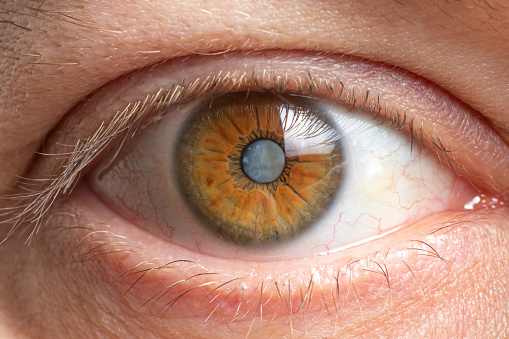Yes, a congenital cataract is hereditary. Cataracts can be defined as the opacity of the crystalline lens which occurs in the process when the refractive index of the lens varies significantly from the distances approximating the wavelength of the transmitted light.The cause of this variation in the refractive index can be because of the changes either in lens cell structure, changes in lens protein constituents, or both.

Generally, cataracts are associated with the breakdown of the lens microarchitecture. Any form of vacuole formation can trigger large fluctuations in optical density thus resulting in light scattering. A significant increase in concentrations of high-molecular-weight protein aggregates, roughly 0.1 nm or more in size can also cause light scattering and opacity to occur.
Hereditary cataracts: Congenital cataracts are hereditary, and they account for between 8.3% and 25% of cataracts. It is possible for only the lens to be involved or the lens opacities may be associated with other ocular anomalies such as microphthalmia, developmental anomalies, aniridia, or retinal degenerations.
One-third of blindness (either partial or total) in infants worldwide is caused by congenital cataracts, and if untreated they can cause permanent blindness by interfering with the sharp focus of light onto the retina, thus finally failing to establish the appropriate synaptic connections between the retina and the visual cortex.
Hereditary cataracts can also be inherited as an X-linked trait, autosomal-dominant (which is most frequent), or autosomal-recessive. Mutations at different genetic loci can result in phenotypically identical cataracts and might have different inheritance patterns, whereas phenotypically variable cataracts can be found in a single large family. Hereditary cataracts can also occur through genetic disorders such as mitochondrial diseases, neurofibromatosis type 2, chromosome abnormalities, or Lowe syndrome, but you have some cases where this distinction is not clear.
Congenital cataracts are not too common, but they occur, and the statistics of their occurrence in developed countries is a frequency of 30 cases among 100,000 births with a further 10 cases being diagnosed during childhood. Most of these cases reflect mainly genetically caused developmental alterations in the lens and surrounding ocular tissues.
It is evident from a genetic point of view that cataract-causing mutations are not distributed randomly.